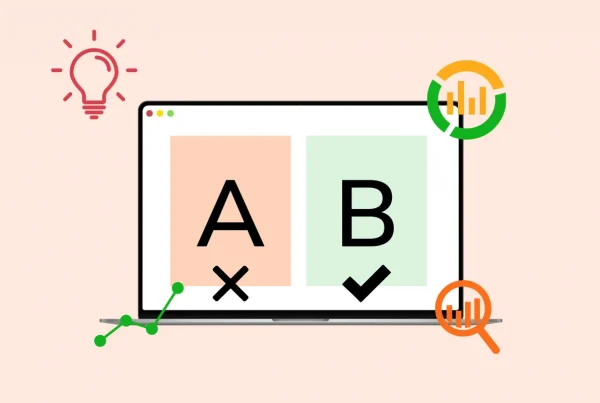Blog article
What are the SEO pain points for e-commerce?

For any e-commerce site, it is essential to optimize SEO. Whether you are a small business with relatively low brand awareness or a leading eCommerce player, every website aspires to attract more and more customers. Organic traffic can help you increase your revenues. However, in practice, this goal is not always easy to achieve. We have identified 4 main issues that eCommerce websites face every day.

SEO pain points for e-commerce
Unique product descriptions
First of all, many online retail platforms lack product descriptions. Some e-commerce websites have millions of products listed in their database, while new products are added every day. Thus, writing specific descriptions for these products would be a long and exhaustive process.
Many online platforms use descriptions from manufacturers to promote their products. As products are usually not sold on only one website, it means that these descriptions are duplicated.
Nevertheless, it is still possible to rank higher on search engines even if your website lacks product descriptions. Instead of writing a unique description for each product, we would rather recommend you to focus on pages or products with the highest potential. In other words, you should allocate your resources to the pages and products with the highest ROI (return on investment). That’s why you should allocate your resources to write specific product descriptions in order to really make a difference.
URL structure
The second issue we identified is related to the URL structure. It is common to find websites with unnecessarily long URLs due to parameters or bad design. This will introduce ambiguity around the page, and when a search engine can’t understand the essence of a page, it doesn’t rank it.
Therefore, having a clean and clear structure for each url can enable both search engines and internet users to have a better understanding of the products that are being sold online.
Keywords optimization
Another problem that often goes unnoticed is that e-commerce businesses do not always optimize pages based on keywords. As said in a previous article, optimizing pages based on keywords is essential to maximize web traffic.

Most e-commerce sites are structured around categories and subcategories. This type of structure doesn’t always match the way users search for the products. Therefore, you can miss a great deal of opportunities by not having the right pages optimized with the right keywords within the right structure. Moreover, many online platforms tend to focus on short-tail keywords that generate higher search volumes. However, this isn’t a guarantee of success. Instead, the high search volume for short-tail keywords means that competition will be higher. By now, you should be aware that if you’re not on the first page of the SERPs, the chance that users click on your page is very slim.
To stand out from the competition, we would advise you to optimize your pages for specific long-tail keywords. Optimizing for long-tail keywords will help you rank on numerous new queries. In the long run, this will also enhance your online authority.
It is also important for e-commerce websites to keep a close eye on internal linking. Indeed, if you have several categories and subcategories, keeping the number of clicks from home to product to an ideal level might be a real challenge. We generally recommend that your visitor only clicks 3 times to access the information he/she is looking for.
Therefore, it is essential that you think hard about the smartest architecture and the best internal linking that you can implement in order to ease web navigation for both your users and search engines.
Pages Titles and H1 tags
Finally, there is the issue of duplicate page titles and H1 tags.. Most of the time this happens because there is a large number of pages on the site. For traditional sites, it is easier to write unique and optimized titles each time a new page is created However, to do this manually on an e-commerce platform becomes inefficient. With often hundreds or thousands of different pages, products going in and out of inventory, with many products similar to those of their direct competitors, it is difficult to avoid duplicate descriptions, page titles and H1.
Consequently, it might be difficult to write a unique title and H1 for every page. But H1 is a major ranking factor. Your H1 should describe what the content is all about and give a strong sense of what your visitor is going to shop or read on the page.

If you have a large number of pages, you can use title templates. These can be used to integrate variables such as the product name, category, or the number of products available. This way, each of your titles can be unique and more specific to the page.
Bottom Line
Here we have just scraped the tip of the iceberg of e-commerce optimization. SEO for e-commerce is more like a long journey rather than a quick destination. In the end, it’s a full-time job that requires juggling with various elements and search trends. Feel free to implement all the tips listed above and check the extra traffic your e-commerce site is attracting. Naturally, if you’d rather have an expert take a look at your e-commerce website, we would be more than happy to assist you. For the past months, we have been very busy successfully deploying our SEO-as-a-solution service on several eCommerce platforms. Here at Verbolia, we firmly believe that our plug-N-play solution is the ideal remedy to your e-commerce SEO pain points.
How can Verbolia help your e-commerce platform.


